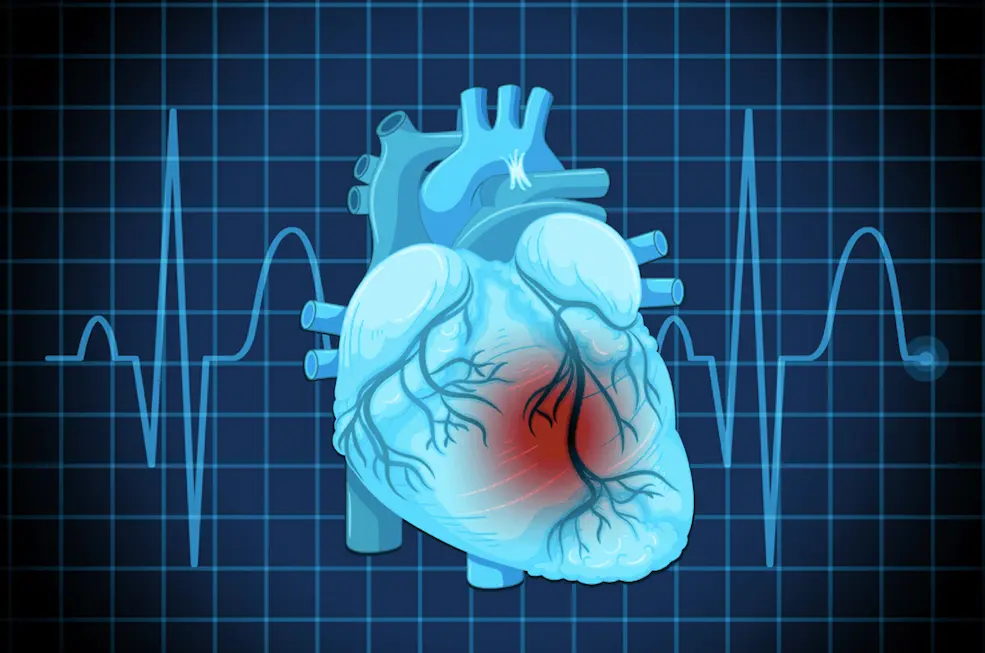Using the heart as an investigational model, scientists at the Broad Institute of MIT and Harvard have designed an autoencoder-based machine-learning pipeline that can effectively predict a patient’s heart condition based on image data from ECGs and MRIs. The approach could also be used to detect markers related to cardiovascular diseases.
Nearly all areas of medical science have utilized artificial intelligence (AI) over the years. It has been effectively diagnosing diseases and predicting their transmission and prognosis. AI has been used to design therapeutic approaches effectively and has been helpful in the field of drug design. The use of AI in studying cardiovascular diseases has come a long way, especially machine learning-based systems. AI-based algorithms can be trained to predict cardiovascular disease outcomes using available diagnostic imaging technology.
Cardiovascular Imaging Modals
Currently, the field of cardiology uses a variety of imaging technologies, such as ultrasound imaging, magnetic resonance imaging (MRI), computed tomography (CT), etc. The Electrocardiogram (ECG) is a widely used test to monitor the heart’s rhythm. These technologies generate a lot of data that can be utilized to analyze the condition of a person’s heart. The availability of several diagnostic modalities has raised the need for standardized tools for analyzing imaging data effectively. A multi-modal framework built on machine learning techniques has been suggested by researchers from The Broad Institute of MIT and Harvard. The proposed system can help doctors to understand the cardiovascular state of a person using data from MRIs and ECGs. In practice, clinicians can use data generated from the machine learning program to diagnose a patient appropriately.
The suggested Multi-modal system can be used to predict data obtained from MRIs and ECGs. A well-organized Multi-modal framework can also be trained to carry out whole genome analysis. Primitive Multi-modal systems were based on algorithms like Canonical Correlation Analysis (CCA) or Non-Negative Matrix Factorization. The current Multi-modal system proposed by researchers is based on a class of machine-learning-based models called autoencoders.
What are Autoencoders?
The autoencoders are machine-generated models that are trained using unlabelled data. The domains of biology, chemistry, and computer vision are already using a variety of autoencoders. They were designed for specific downstream applications. The autoencoder designed to study the cardiovascular features of a person provides a generalized representation of available data with an emphasis on improving the working of downstream applications. The generalized characterization involved: a) multi-modal data integration, b) translation of collected data, and c) prediction of phenotype. The Autoencoder was also able to perform a genome-wide association study to identify the genotype-to-phenotype relations for a particular trait.
On the basis of ECGs and cardiac MRIs, genome-wide association studies are already being carried out to find Single Nucleotide Polymorphisms (SNPs) associated with cardiovascular illnesses. They rely on Labelled data collected from individual modal systems (ECGs or cardiac MRIs). The new Multi-modal system is trained to have a more generalized approach to identifying SNPs that may influence the cardiovascular state of a person. To test their theory, the scientists collected samples (ECG and cardiac MRI) from the UK Biobank database. They were able to design a cross-modal autoencoder algorithm that can identify a person’s cardiovascular condition. The machine learning-based approach was found to be superior in predicting cardiovascular traits compared to existing supervised deep learning algorithms.
Designing the Cross-Modal Autoencoder
The summary for creating a cross-modal autoencoder algorithm is as follows:
- Autoencoders were trained using cardiovascular data from ECGs and cardiac MRIs collected from the UK Biobank in a latent space to map training data.
- The latent presentation by the algorithm was used to identify and predict phenotypic traits that may lead to cardiovascular disease. Though the framework was trained to use data from two modalities (ECGs and cardiac MRIs), it can also work on single as well as multiple modalities.
- The cross-modal autoencoder’s design enables the translation of data across the two modalities. MRIs represent structural information, whereas ECGs show myoelectric information, and both of these dates are interrelated. ECGs data was fed to an encoder followed by an MRI decoder that translated ECGs to MRIs.
- The cross-modal data generated can be used to understand genotype to phenotype association for cardiovascular diseases. A supervised learning algorithm for cross-modal representations performs better in predicting both MRI and ECG-derived phenotypes. Experiments on data from single to multiple modalities showed the Autoencoder model could easily be trained only on data obtained from ECGs to generate reliable phenotypic predictions. ECGs are easily obtained, far less time-consuming, and cheap compared to cardiac MRIs.
Another critical aspect of the research related to designing the encoder was to analyze the amount of labeled and unlabeled data samples required to train a cross-modal autoencoder. Labeled data was used for performing supervised learning, and unlabelled data was used for cross-modal autoencoding. The researchers found that unlabeled data showed higher efficiency in predicting phenotypes as compared to labeled data samples. Another study was conducted to evaluate the efficiency of the translation of ECGs to MRI data and vice versa. A comparative study was conducted based on predictions generated by the autoencoder against a previously trained neural network to predict Left Ventricular Mass (LVM) or Right Ventricular End-Diastolic Volume (RVEDV). The study revealed the prediction generated using data from LVM and RVEDV matches with translated cardiac MRIs for both the trained neural network.
Genome-Wide Association Study (GWAS)
The scientist, in continuation with their current work, also analyzed the efficiency of the cross-modal-based deep learning-based algorithm in identifying genotype-to-phenotype relationships for cardiovascular traits that may lead to cardiovascular diseases. The researchers disclosed that SNPs might be found using their unsupervised machine learning-based methodology in a genome-wide association investigation. The cross-modal encoder accurately identified phenotypes from the genome-wide association study. It also retrieved SNPs specific to the phenotype identified for a given modal.
Though the modal was still highly efficient, some limitations were also observed. It was observed that analyzing one trait at a time was a less efficient way of tracking its phenotypic expression, as genetic traits are pleiotropic in nature, and a single gene can affect several traits. Moreover, results based on a single trait for a particular modality can generate inconclusive answers. To overcome this limitation, scientists have designed an unsupervised machine-learning algorithm based on a genome-wide association study that spontaneously identifies genetic traits from diagnostic modalities without relying on labeled phenotypic data. The scientist also observed that ECG based cross-modal approach was more efficient in identifying GWAS-based SNPs than MRI based cross-modal approach.
Conclusion
According to the research published in Nature Communications, scientists have devised a cross-modal autoencoder algorithm that can combine data from various modalities to depict a person’s physiological state. They combined imaging data from cardiac MRI and ECG to train a machine learning-based algorithm. The researchers were also able to increase the predictions of phenotypic traits from a single model and easily translate cardiac MRIs based modalities to ECGs-based modalities. By using advanced machine learning algorithms, they were able to improve cross-modal representations-based prediction of cardiovascular phenotypes from ECGs-based modal alone. With the availability of Biobanks, the cross-modal approach may be used for studying another organ system effectively.
Article Source: Reference Paper | Reference Article
Learn More:
Sipra Das is a consulting scientific content writing intern at CBIRT who specializes in the field of Proteomics-related content writing. With a passion for scientific writing, she has accumulated 8 years of experience in this domain. She holds a Master's degree in Bioinformatics and has completed an internship at the esteemed NIMHANS in Bangalore. She brings a unique combination of scientific expertise and writing prowess to her work, delivering high-quality content that is both informative and engaging.










